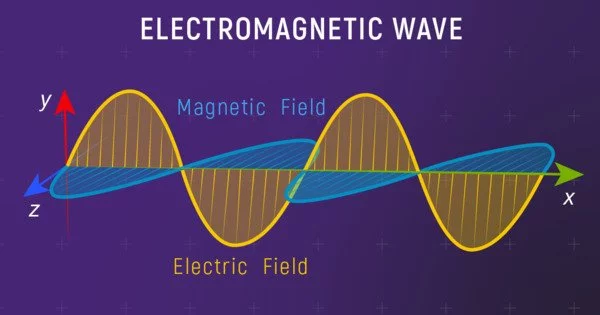The generation of an electromotive force (emf) across an electrical conductor in a changing magnetic field is known as magnetic induction. The interaction of electric and magnetic fields is referred to as electromagnetic. It is a fundamental aspect of physics and is important in many natural phenomena as well as numerous technological applications.
Electromagnetic waves are a type of energy that travels through space. They are caused by the acceleration of electric charges and are made up of oscillating electric and magnetic fields that are perpendicular to each other and the direction of wave propagation. Electromagnetic waves can travel in a vacuum, such as sunlight, or through a medium, such as radio waves traveling through the atmosphere.
Induction was discovered in 1831 by Michael Faraday, and James Clerk Maxwell mathematically described it as Faraday’s law of induction. The direction of the induced field is described by Lenz’s law. Faraday’s law was later generalized into the Maxwell-Faraday equation, one of four Maxwell equations in his electromagnetism theory.
The electromagnetic spectrum is made up of many different wavelengths and frequencies. Low-frequency waves such as radio waves are at one end of the spectrum, followed by microwaves, infrared radiation, visible light, ultraviolet radiation, X-rays, and finally gamma rays at the high-frequency end. The electromagnetic spectrum has distinct properties and interactions with matter.
Maxwell’s equations, a set of fundamental equations developed by James Clerk Maxwell in the nineteenth century, describe electromagnetism. These equations describe how electric and magnetic fields interact and propagate, and they combine electrical and magnetic phenomena into a single theory.
Electrical components such as inductors and transformers, as well as devices such as electric motors and generators, have found many applications for electromagnetic induction.
Electromagnetic fields have numerous practical applications. Some notable examples include:
- Communication: Radio waves, microwaves, and other forms of electromagnetic radiation are used for wireless communication, such as radio and television broadcasting, cellular networks, Wi-Fi, and satellite communications.
- Medicine: Electromagnetic fields are used in various medical imaging techniques, including X-rays, magnetic resonance imaging (MRI), and ultrasound.
- Power generation and transmission: Electrical power is generated in power plants using electromagnetic principles, and it is then transmitted over long distances through power lines using high-voltage alternating current (AC).
- Optics: The behavior of light, which is an electromagnetic wave, is described by the laws of electromagnetism. Optics deals with the study of light and its interaction with matter, leading to technologies like lenses, lasers, and fiber optics.
















